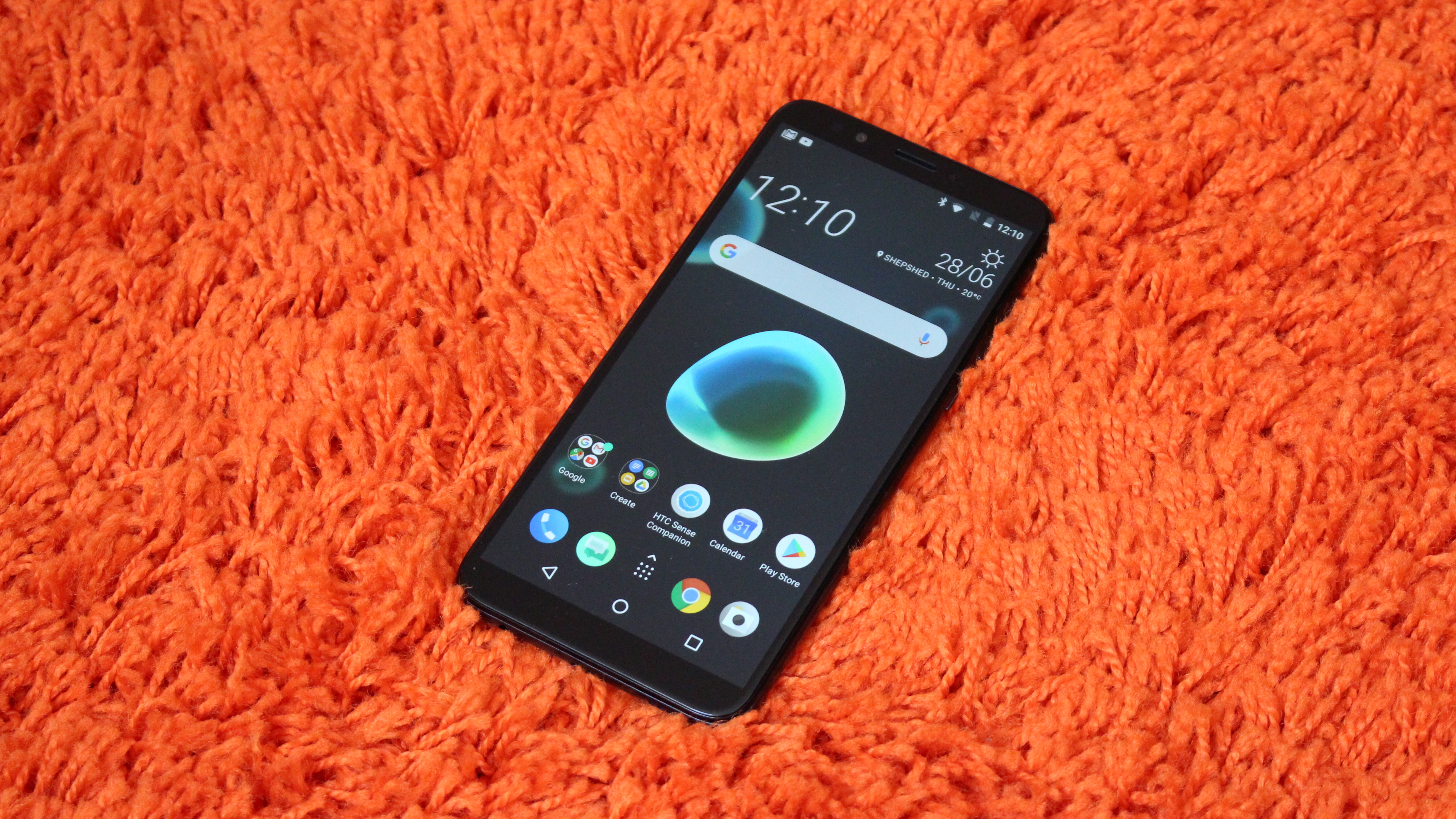Why you can trust TechRadar
Interface and software
- Runs Android Oreo
- HTC's Sense UI is bloat-free
Like a great many Android devices in 2018, the Desire 12 Plus is running Oreo out of the box, but it comes with HTC's own UI skin sitting on top. Mercifully, it's a very light skin with minimal changes and almost no bloatware to speak of; HTC has even sensibly opted to avoid duplicating features which already exist within Google's own app ecosystem.
The two areas where HTC tries to set itself apart are BlinkFeed – which sits to the left of your main home screen and works very much like Google's own ‘Now’ app by pulling together a news feed which showcases posts from your social media, the latest weather reports and much more besides – and Sense Companion.
Sense Companion is HTC's take on the AI assistant craze which is currently sweeping the world of smartphones, and like Siri, Bixby, Google Assistant and Alexa, it tries to make your everyday digital life that little bit easier.

It uses data like your location, the time and day and basic usage patterns to offer helpful suggestions with the objective of streamlining your daily grind.
It will, like Google's AI companion, pick up on nearby points of interest, but it offers other cool features like being able to tell you if your battery won't last until your next calendar appointment, or if going for a run is advisable given the current weather.
In a neat touch, a small Sense Companion icon 'bubble' appears on the left edge of the screen when it has a suggestion, which is delightfully non-obtrusive.

You can, of course, simply use Google Assistant instead, and to be honest it's probably a more mature and feature-rich option when compared to Sense Companion.
While HTC has some neat ideas and the way in which the software 'blends' with the UI is commendable, we can't help but wish handset makers would simply do a better job of integrating Google's superior option rather than spending all this time and effort making something that simply isn't as capable.
Performance-wise, moving around the UI is a smooth affair, and apps load quickly. Switching between active applications is a breeze too, but there are brief moments of lag when the phone is performing several different tasks in tandem.
Movies, music and gaming
- 18:9 widescreen display is great for movies and gaming
- Mono speaker is loud but too easy to muffle
- 32GB of storage, but only 22GB is available to the end user
That large 6-inch screen is ideal for watching movies, although the low resolution does mean that things can look somewhat ill-defined at times. The lack of brightness also means that you'll want to restrict your cinematic pursuits to darkened environments. Despite these minor shortcomings, the 18:9 aspect ratio screen performs admirably.
The audio side of things isn't quite as impressive, however. While the mono speaker is loud and doesn't exhibit any distortion at high volumes, its position on the bottom edge of the phone means it's far too easy to accidentally cover with your hand during use.
We'd also have preferred a stereo speaker setup, like that seen on the much pricier HTC U12 Plus. Thankfully the phone comes with a 3.5mm headphone socket, so you can use a pair of wired headphones when you're binging on Netflix.

With just 32GB of storage – of which around 22GB is available to the end user once essential downloads are taken into account – the Desire 12 Plus isn't blessed with loads of space for music, movies and games.
It's a bonus then that the second SIM card slot can be used to insert a microSD card of up to 2TB in capacity. If you intend to download a lot of media to your phone – and you don't intend to use two SIMs – then you'll almost certainly want to pick up a large card.
3D gaming is an excellent way of testing the performance of any smartphone, and the Desire 12 Plus handles these well enough. The phone's relatively low resolution screen helps take pressure off the CPU and GPU, but really intense titles still stutter slightly when the action hots up. More basic 2D games run smoothly, however.

Specs and benchmark performance
- Snapdragon 450 with 3GB of RAM
- Acceptable performance with occasional pauses
- No NFC support, or 5GHz Wi-Fi
The Desire range has always been about offering good performance at a mid-range cost, and this new model is no different. Beating at its heart is the Snapdragon 450 chipset, which isn't Qualcomm's cutting-edge silicon but is more than capable of handling the stresses of modern smartphone use.
It has been designed with a focus on dual-camera effects and battery management optimization, and is paired with 3GB of RAM.
In benchmark tests, the Desire 12 Plus is in roughly the same ballpark as phones like the Nokia 6 (2018), Honor 7X and Honor 9 Lite. In Geekbench, the Desire 12 Plus scores 3,758 in the multi-core benchmark, which is a similar score to those posted by other 2018 budget challengers.
There are some pretty significant omissions in the spec sheet for the Desire 12 Plus, though. There's no NFC support, which means you can't use the phone to make mobile payments with Google Pay. The lack of 5GHz Wi-Fi band support is also slightly disappointing.
Current page: Anything else I should know?
Prev Page Battery life and camera Next Page Verdict and competition